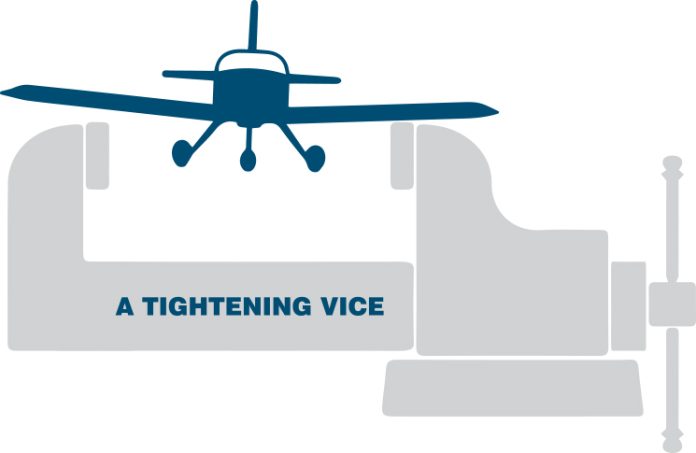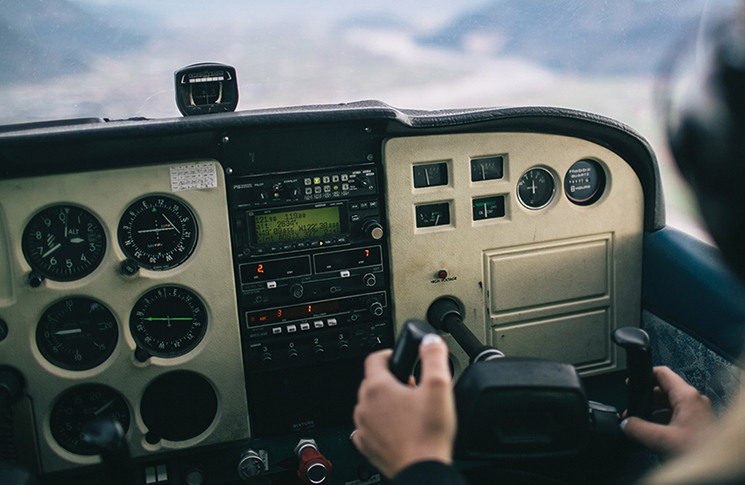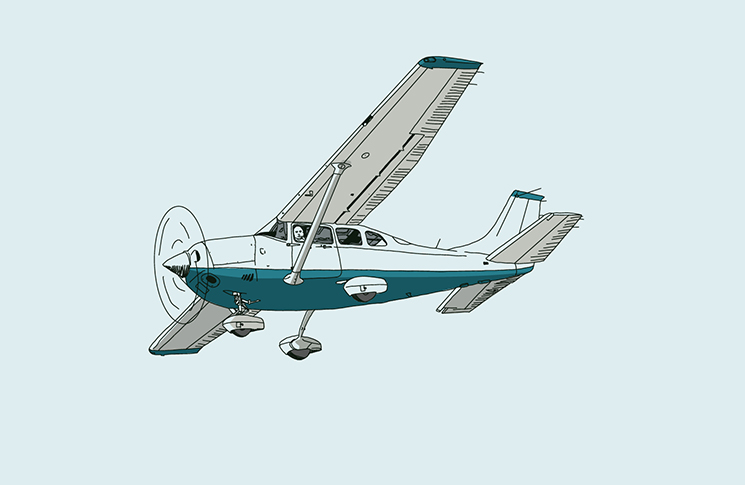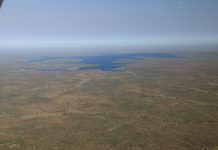Trapped between walls of cloud, this pilot was racing against sunset to find a safe landing.
It is sobering to reflect on a flight that could very well have been one’s last. Up to that time, my total flying experience as a private pilot amounted to a mere 120 hours gained over the preceding 3 years.
I had acquired a beautiful Vans RV6a and was keen to get some concentrated time at the controls. Having already flown it for 40 hours, there was so much more to know and experience. So I set aside a week off work to spend with a friend whose experience as an ex-charter pilot was always appreciated. He had generously taken leave off work himself to help me. We spent the days doing sorties from Jandakot to the north, east and south. My repertoire of airfields on which I had landed increased in number from 6 to 12, along with gaining more confidence in controlled airspace.
The week was over and now it was time to fly home to Bunbury in July 2016. The weather at Jandakot was clear overhead, though an occasional cumulus cloud could be seen to the south. I made a phone call to the aeroclub in Bunbury to ask about the weather. No-one was manning the desk, so I made the decision to depart at about 4 pm without this real time update.
The further south I travelled, the closer I came to an interesting but also disturbing meteorologic phenomenon, about 20 nm to the north of my destination. A wall of cloud loomed in front of me, extending as far as I could see from the west (over sea) all the way inland. This veritable wall appeared to rise from the ground and levelled off at 3000 feet – a little higher than my current cruising altitude of 2500. If the end of daylight was not so pressing, I may have been tempted to climb well above it and peek over the top to see if Bunbury itself was clear of cloud.
But I did not have the luxury of throwing away valuable daylight. Yet, at the same time, I continued my southerly track to get a closer look at this most interesting cloud formation. It was almost the equivalent of the Sirens of Greek mythology which lured sailors to their destruction by the pleasing sounds of music and singing.
When I was approximately 5 nm from this wall, I decided to make a left‑hand turn away from the cloud. Half way around the turn, a downdraft violently threw the plane into a nose dive. I hit my head on the canopy, dislodging the Bose headset and flinging it to the baggage area. I regained control of the aircraft after losing a good 800 or so feet within seconds. What had I been thinking?
I knew that a safe return to Jandakot was now my most pressing goal. And I also knew that I would be racing the clock against rapidly fading light. So I gave that O-360 all the power it could achieve as I began tracking north.
By the time I reached Pinjarra, just 25 nm from that nose dive, I could no longer see the southern suburbs of Perth. In the 50 minutes since I had left Jandakot, there was now a wall of cloud completely blocking my path. I was now stuck in the middle – unable to get to my intended southerly destination and unable to return to my departure airport.
Darkness was now beginning to envelope me. The cloud layers obscured the low-hung sun, which meant I could barely make out the landscape and lights of the area. I fumbled a radio call to Melbourne Centre to amend SARTIME destination and time.
While heading south, the wind was almost non-existent. Now it was howling in from the west. I knew I had only one hope – Murray Field Aerodrome just to my north – if I could find it! Given that my friend had fortuitously introduced me to Murray Field just the day before, it did much to alleviate the anxiety associated with landing at a new airstrip, especially under such circumstances.
I was now stuck in the middle – unable to get to my intended southerly destination and unable to return to my departure airport.
I was now reliant on OzRunways to locate the airport rather than visually recognising the airport and its surrounds. From memory, I knew it had an unsealed (albeit unlit) runway oriented 09–25 which would allow me to land directly into the wind. Despite my extremely high levels of anxiety, the touchdown could not have been smoother nor sweeter.
By the time I had taxied off the runway, I had to use the landing light to navigate to the parking area opposite the hangars. Had my arrival been even 5 minutes later, the outcome would probably have been quite different.
My friend kindly drove down from Perth and took me back to his home for the night. He then flew me in his plane to Murray Field early the next morning in atmospheric conditions that could not have been more glorious.
Lessons learnt:
- Don’t take weather for granted. It can be beautiful in one location and lousy 30 minutes away.
- Check weather forecasts and reports as though one’s life depended on them (even when the departure and destination airports are in close proximity). The weather patterns can be dramatically different between Perth and Cape Naturaliste. In fact, there can be significant differences even between Bunbury and Busselton, which is a little further to the southwest by about 10–15 minutes flying time. The forecasts should always include the possibility of a return to the departure airport.
- Ensure the departure time allows for a diversion to an alternate and still land with a healthy daylight margin (VFR pilots).
- Formulate and adhere to personal minimums.
- Debrief with a seasoned instructor who will not hold back from talking straight. You want your flight to be roundly critiqued rather than hearing platitudes and receiving a slap on the back and ‘She’ll be right next time mate!’ No, it is not all right and without addressing the failures, it won’t be right next time.






Good article, thank you for sharing. Critique is always valuable. I am a low hour pilot ( 250 hours ) always keen to be critiqued by other pilots when I am fortunate enough to have another pilot in the right hand seat flying with me. Its a great opportunity to share experiences, knowledge and increase my limited experience. Being a member of a aero club is hugely beneficial as, not only is there experienced pilots to fly with, but also a wealth of knowledge to share on the ground.
Good lessons learned – thanks for sharing.
Many thanks for sharing – good learnings. If I can add another learning, try to know the airstrips along your route before you go. With OzRunways that’s not difficult to achieve. There are several in the area between Jandakot and Bunbury Airports, not just Murray Field. Given the strong Westerlies, in addition to Murray Field, Serpentine Airfield comes to mind with its beautiful East/West grass runway 09/27.